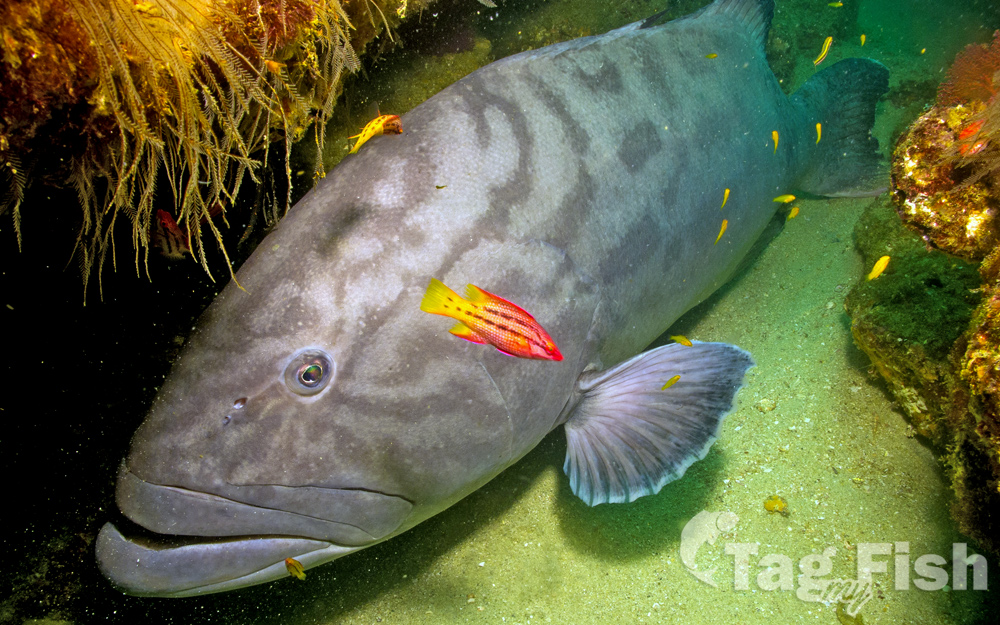Gulf grouper
(Mycteroperca jordani)

Classification
General data
The Gulf grouper (Mycteroperca jordani) is a species of marine ray-finned fish, a grouper from the subfamily Epinephelinae which is part of the family Serranidae, which also includes the anthias and sea basses. It is endemic to Mexico.
Description
The Gulf grouper has an elongate, robust and compressed body that is no deeper at the origin of the dorsal fin than it is the origin of the anal fin. It standard length is 3.1 to 3.4 times its depth. The preopercle is rounded, lacking a lobe, and has a finely serrated margin.
The dorsal fin contains 11 spines and 16-17 soft rays while the anal fin contains 3 spines and 10-11 soft rays. The caudal fin is straight to concave.
The colour of the adults is normally a uniform dark brown or grey, although they have the ability to quickly change colour and to adopt a pattern resembling that of juveniles. In the larger adults, the margin of the pectoral fin is white and the dorsal, anal and caudal fins have a narrow white edge. The juveniles are greyish brown marked with large, dark grey roughly rectangular blotches on the upper part of the body and fins.
The maximum published total length for this species is 198 centimetres (78 in) and the maximum published weight is 91 kilograms (201 lb).
Distribution
The Gulf grouper is found in the eastern Pacific Ocean where it is endemic to Mexican waters from San Carlos, Baja California Sur south to Mazatlán. It is found throughout the Gulf of California and around the Revillagigedos Islands. It has been recorded as a vagrant off San Diego in the 1940s and 1950s.
Habitat and biology
The Gulf grouper is found over rocky reefs, kelp beds and seamounts. The adults are normally found at depths between 5 to 30 metres (16 to 98 ft) but has been recorded as deep as 45 metres (148 ft) during the summer months, and even as deep as 100 metres (330 ft) on reefs. The juveniles are found in shallow rocky reefs and artificial reefs, and also in estuaries, mangroves and bays around the islands and along the northern and central coastlines of the Gulf of California. They have been reported to prey on juvenile hammerhead sharks. The more usual prey is other fish, lobsters and slipper lobsters.
It is thought that these fish attain sexual maturity at six to seven years when they are around 98 centimetres (39 in) in total length. The adults form spawning aggregations numbering more than 40 in the period from April to June. In the southern Gulf of California these aggregations cover areas larger than 1,000 square metres (11,000 sq ft). The aggregations have been recorded over rocky reefs or around seamounts where there are steep drop-offs and numerous of gorgonians and black coral. Aggregations have also been recorded over sandy substrates next to reefs. They spawn in pairs and a male will pair with a number of females. There are around three to five females for each male. This species is thought to be a protogynous hermaphrodite as the males are normally considerably larger than females, the sex ratios are weighted towards females, they spawn as pairs, the males are aggressively territorial and there is no evidence of sperm competition.











